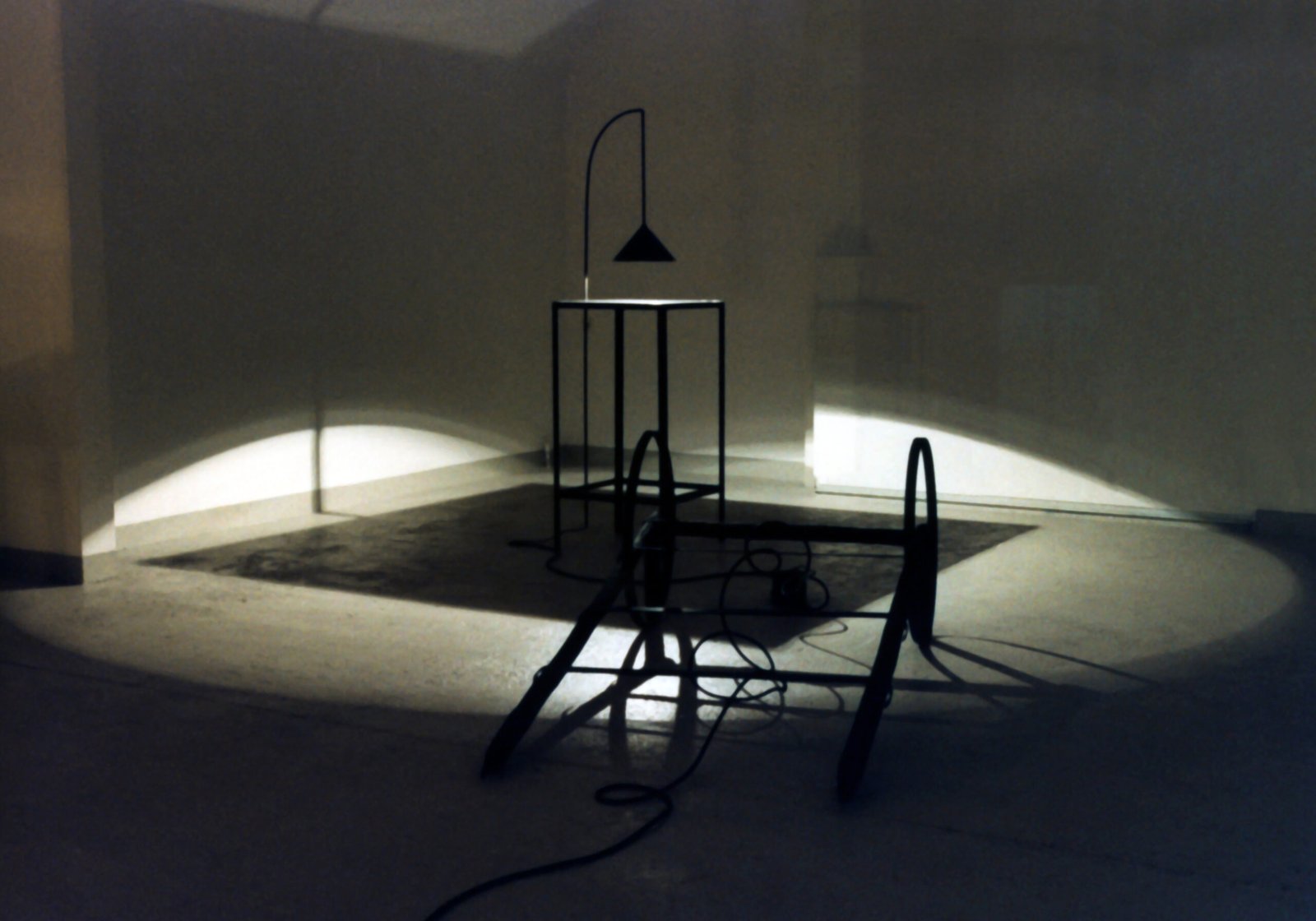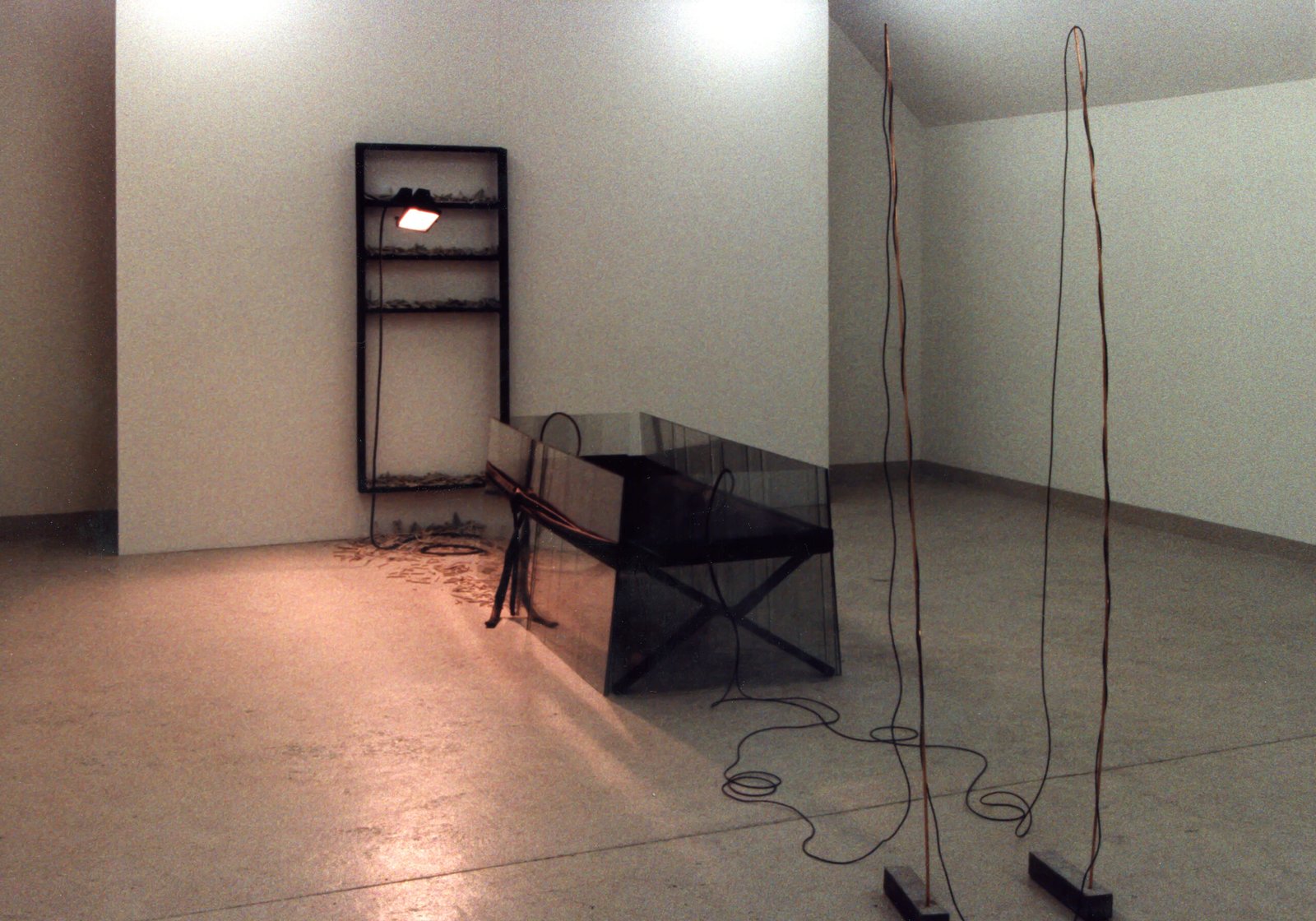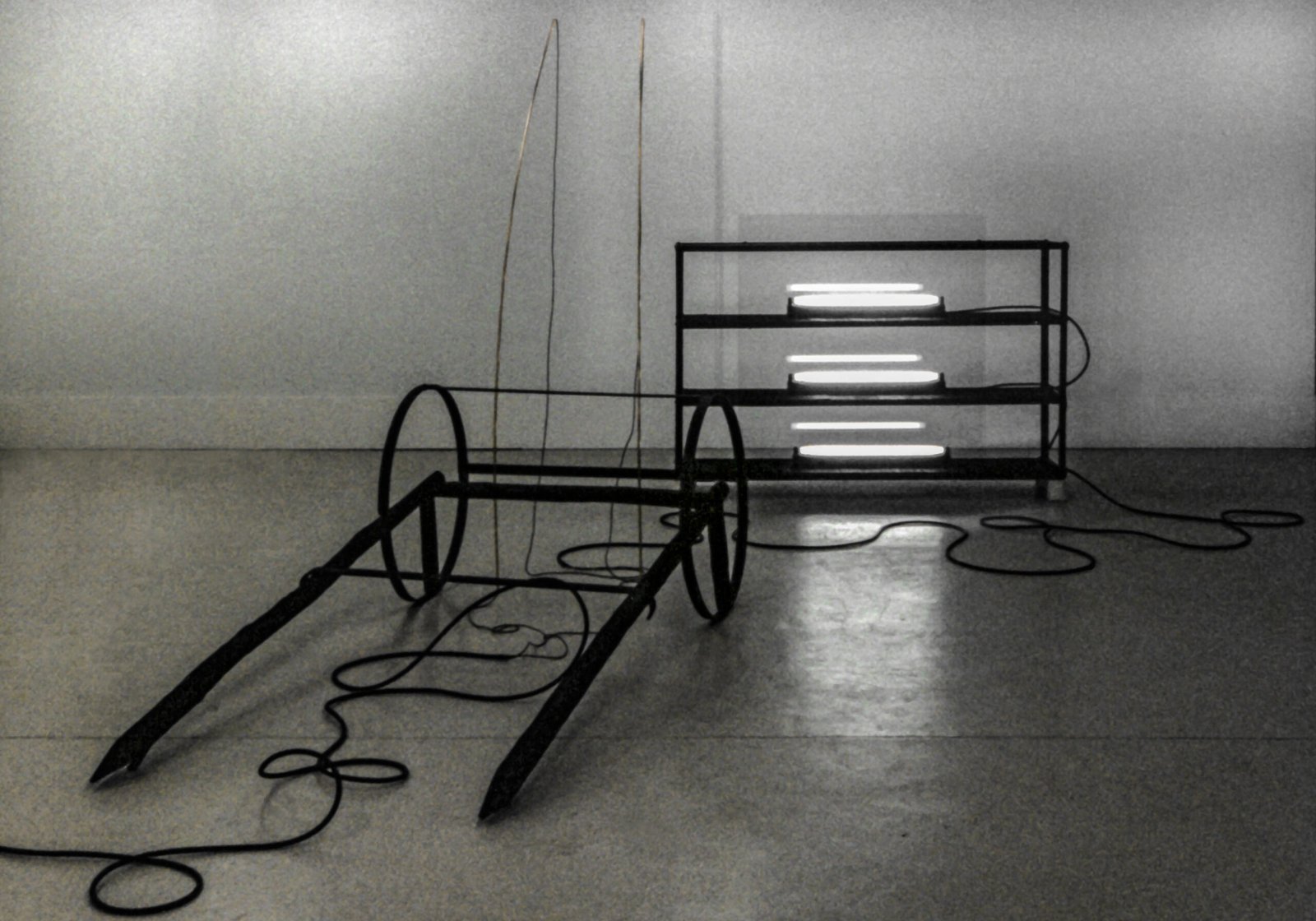Singular arrangements, expansive assemblages. Islands of light. That is the first thing one sees—the deployment of unusual archipelagos in the darkness of a space. A network of connections, junctions, and interactions between disparate elements. At first glance, they form a whole, setting the tone and leaving their imprint, placing objects in circulation alongside visitors. Yet, upon closer, slower observation, a set of privileged, recurring materials emerges : a vocabulary of transit for stellar sites, emblematic components.
Among them: charcoal, cotton wool, papier-mâché, glass… All materials seized in a moment of their transformation cycle. Transitory moments. Alterations of origin. These materials bear witness to an ephemeral condition; they speak of the precariousness of the present. They carry the effects of time. The carts signal its movement—worn, sanded, charred, newly bound, dressed, protected, they embody the necessary locomotion that propels every traveler. They also manifest the weight, the burden—not that of luggage, but of memory, fragile and volatile. Indeed, what do they transport if not dust, transparencies, and lightness, delicate remnants hovering between presence and disappearance, much like the young Golem formed of clay, shifting from inert to animated, only to be destroyed once more by the will of the magician.


Thus, Alain Quesnel arranges, combines, and structures spaces centered on passage and transition—between two markers, two poles, two states. Spaces of discreet transformation and secret experimentation, within which he maps the flow of energies. Light stands at the core of the work; it is its breath, its internal life. A controlled manifestation of latent currents, it propagates energy just as the wires burst forth, cascade along copper rods, and coil within the elements. There is a principle of equivalence here. And of resonance. While wires trace movement and connection, light delineates and distinguishes autonomous territories, reveals their architecture, and breathes magic into them. A physical entity, it murmurs its presence, proclaims its brilliance, and chants responses to the blacks and whites. It condenses and magnifies the roles played in painting—as both the source necessary for the birth of the visible and a fragment of space woven into the whole. In Alain Quesnel’s installations, light could be the coloration, while the formalized materials create the drawing.
This staging invites other analogies with painting and drawing. In the ensemble’s rectilinear structure, for instance—a composition founded on succession, ebb and flow, pursuit. It reads in the plane, along the axis. Directed. A progression devoid of catastrophe, unlike Fischli and Weiss’s «The Way Things Go» , which revels in the jubilant interplay of causes and effects. Here, there are no disruptions—only the subdued modulation of a plainchant. A force held in suspension. Motionless waystations. Seemingly. And then, the intervals. Renaissance painters, in their experimental efforts to invent continuous and homogeneous space—though not yet conceptualizing it—used the word « locus » instead of « spatium » to designate the placement of color on panels : “After setting the color in its place…” the painter was obliged to unite them. Space, at that time, signified intervals. Alain Quesnel leans toward « locus » rather than « spatium ». He places things in their site—with no other connection than thread and thought. His installation takes on an allegorical dimension.
In a book from the 1970s, « The Devil’s Herb and the Little Smoke », anthropologist Carlos Castaneda recounts the first lesson he received from his Yaqui sorcerer. In pursuit of a different knowledge, he first had to discover, among all the possible positions his body could occupy within a space, his own place, his unique site. The questions this raised were exhausting: how to proceed ? What criteria to rely on ? How to orient oneself ? His relentless energy led him to experiment with a random, non-rational topography—from east to west, north to south, meter by meter—until he found it, and another logic emerged.
This could be what Alain Quesnel reveals to us : his place, then another, and yet another : his distinct spaces, yet always shifting. This could be the essence of his energy and journey, his forward movement without a starting point or destination, devoid of initiatory purpose : a raw exposure of flux between things, an idea of passage, of relations and transformations without prolonged stops, or rather, with still images — the exhibited pieces — within a complex, fluid continuum. Moments, brief situations, burnished copper illuminations narrating the chronicles of movement, expressing the desire to continue, to open new paths, to explore uncharted territories through a wandering mind, untethered, guided solely by impulse and the randomness of an internal course.
Marie-Luce Thomas – 1994
Exposition Alain Quesnel – Illuminations – Le Blanc – 1994
